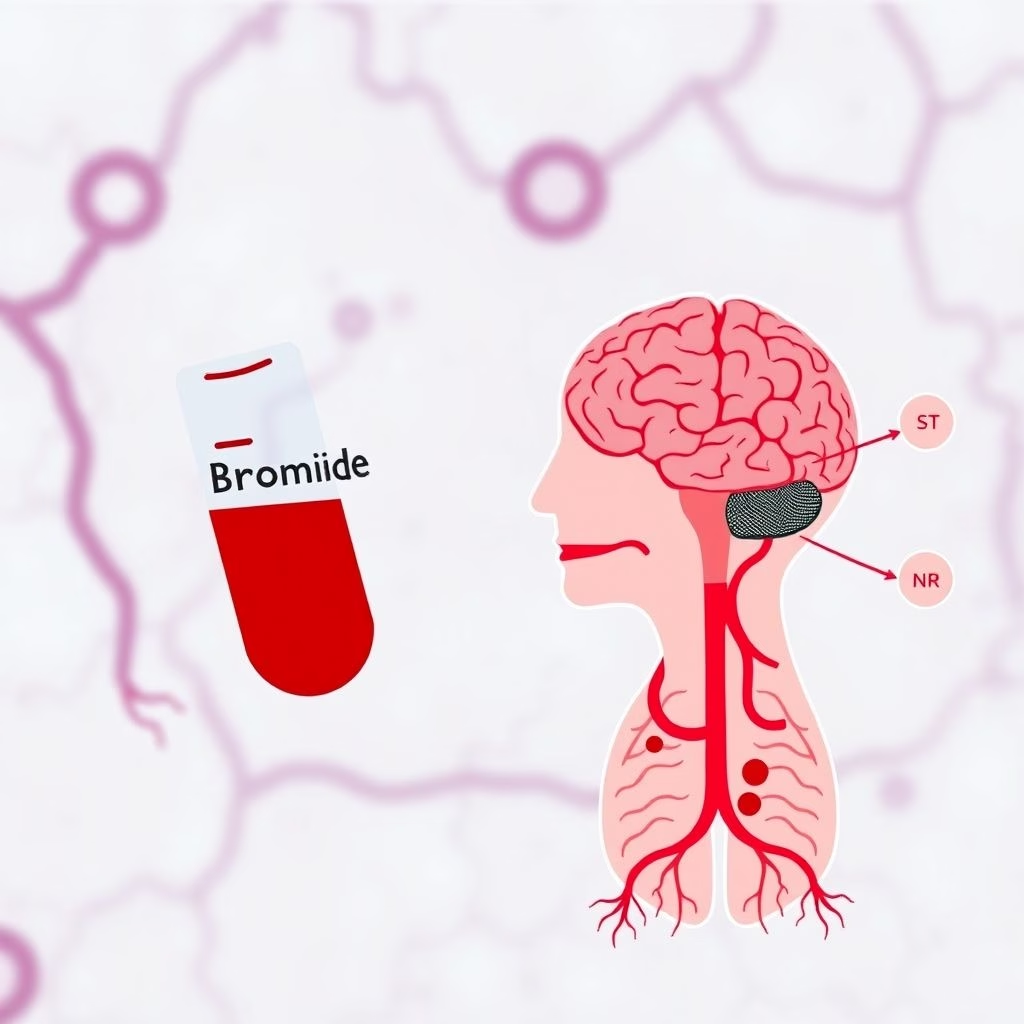Bromism: A Rare but Real Threat from a Forgotten Chemical

Bromism: The Silent Threat of Chronic Bromide Exposure
In the annals of medical history, certain conditions once commonplace fade into obscurity as medical advancements and changing practices render them increasingly rare. Bromism is one such condition. Though now uncommon, it serves as a stark reminder of the potential dangers lurking within seemingly innocuous substances and the critical importance of understanding how our bodies interact with the world around us.
Bromism, at its core, is a syndrome caused by the long-term exposure to bromide. Historically, this exposure most often stemmed from the use of bromide-containing sedatives. Before the advent of safer and more effective medications, bromides were frequently prescribed to treat anxiety, insomnia, and other neurological conditions. Today, however, the use of bromide in medicine is severely restricted, making bromism a less frequent diagnosis.
The Culprits: Where Bromide Lurks
The primary source of bromide exposure historically was, as mentioned, bromide-based medications. However, bromide can also be found in other products. A surprising source of bromide exposure in recent history, for example, has been from brominated vegetable oil (BVO), a food additive used to stabilize citrus-flavored soft drinks. While BVO use is being phased out in many countries, it highlights the insidious ways that substances can find their way into our bodies.
Symptoms: A Wide Spectrum of Manifestations
The symptoms of bromism are notoriously diverse, making diagnosis a sometimes-challenging process. They can range from relatively mild neurological issues to severe psychiatric disturbances. The onset and severity of symptoms are tied to the level and duration of bromide exposure, as well as individual susceptibility.
Common neurological symptoms include:
- Somnolence (excessive sleepiness)
- Lethargy
- Headaches
- Ataxia (loss of coordination)
Psychiatric manifestations can be particularly alarming, including:
- Psychosis (loss of touch with reality)
- Delirium
- Hallucinations
- Depression
Other symptoms may include dermatological problems (skin rashes), gastrointestinal issues (nausea, vomiting), and, in severe cases, seizures. The varied presentation underscores the importance of considering bromism in the differential diagnosis when dealing with a patient exhibiting a constellation of these symptoms.
The Long Half-Life: Why Bromide Lingers
One of the key factors contributing to the dangers of bromism is bromide’s long elimination half-life. This means that it takes a considerable amount of time for the body to clear the substance. This prolonged presence in the system allows bromide to accumulate, increasing the risk of toxicity. This accumulation can occur even with relatively low levels of chronic exposure.
Diagnosis and Treatment: Identifying and Addressing the Issue
Diagnosing bromism requires a high degree of clinical suspicion. The diagnostic process typically involves the following:
- Detailed Medical History: Gathering information about the patient’s medication use, potential exposure to bromide-containing products (including those outside of direct medical use), and any relevant dietary factors.
- Serum Bromide Level: Measuring the concentration of bromide in the blood is the most definitive diagnostic tool. Elevated levels confirm exposure and provide insight into the severity of the intoxication.
- Other Blood Work: Additional blood tests may be necessary to rule out other conditions that could mimic the symptoms of bromism and to assess the patient’s overall health.
The treatment for bromism primarily focuses on increasing bromide excretion from the body. Common approaches include:
- Increased Fluid Intake: Encouraging the patient to drink plenty of fluids to promote renal excretion of bromide.
- Diuretics: Medications that help the kidneys eliminate fluid and, consequently, bromide.
- Hemodialysis: In severe cases of bromide intoxication, hemodialysis may be necessary to rapidly remove bromide from the blood.
It is also important to address any co-existing conditions, such as iodine deficiency, which has been shown to exacerbate the effects of bromide exposure.
A Word of Caution
While the use of bromides has significantly decreased, vigilance is still crucial. Cases of bromism can still occur from the unintentional or intentional consumption of bromide-containing products. Furthermore, it’s a reminder to carefully scrutinize medication ingredients and consider potential exposure from other sources. This is particularly important for healthcare providers who need to maintain a high index of suspicion when faced with patients exhibiting symptoms that may point to bromide toxicity.
In Conclusion
Bromism, though rare today, remains a testament to the importance of understanding the potential impact of chemicals on our bodies. Being aware of this condition, its sources, and its effects can help protect both individuals and public health. Although cases are diminishing, a diligent approach to diagnosis and treatment is essential to prevent the unnecessary suffering that can result from bromide exposure.



